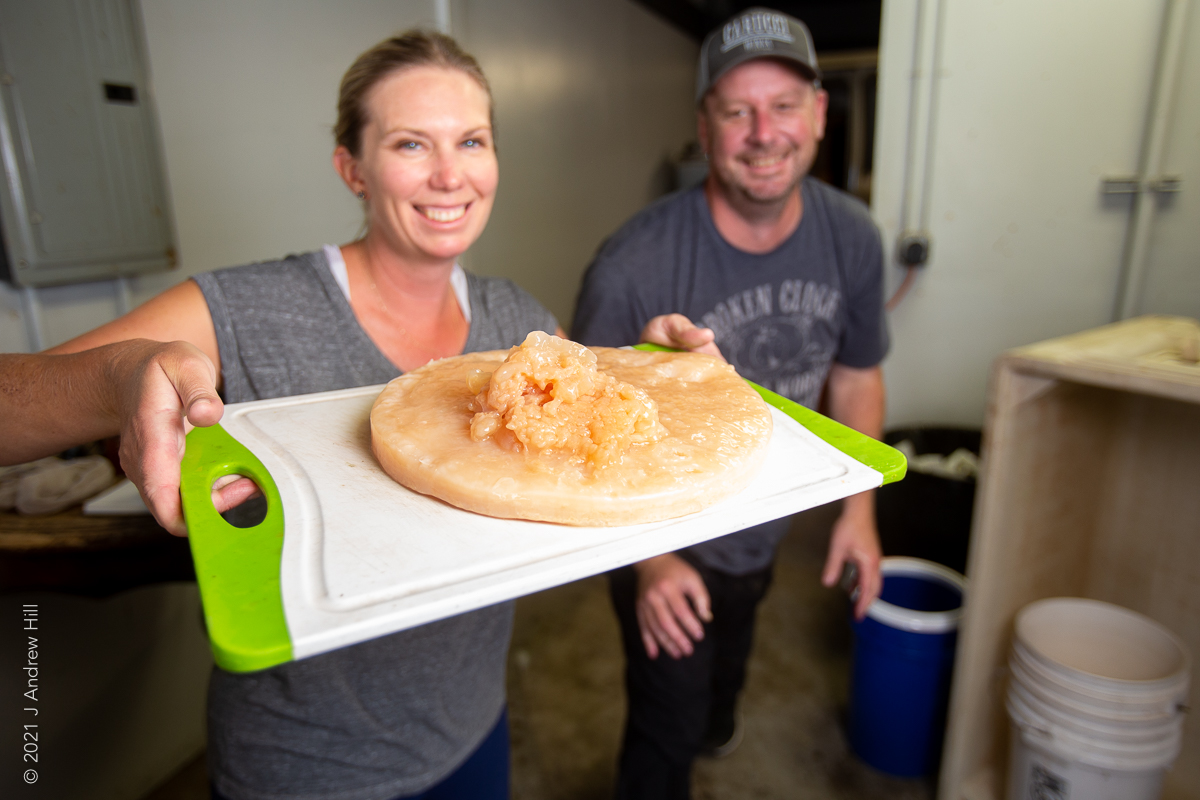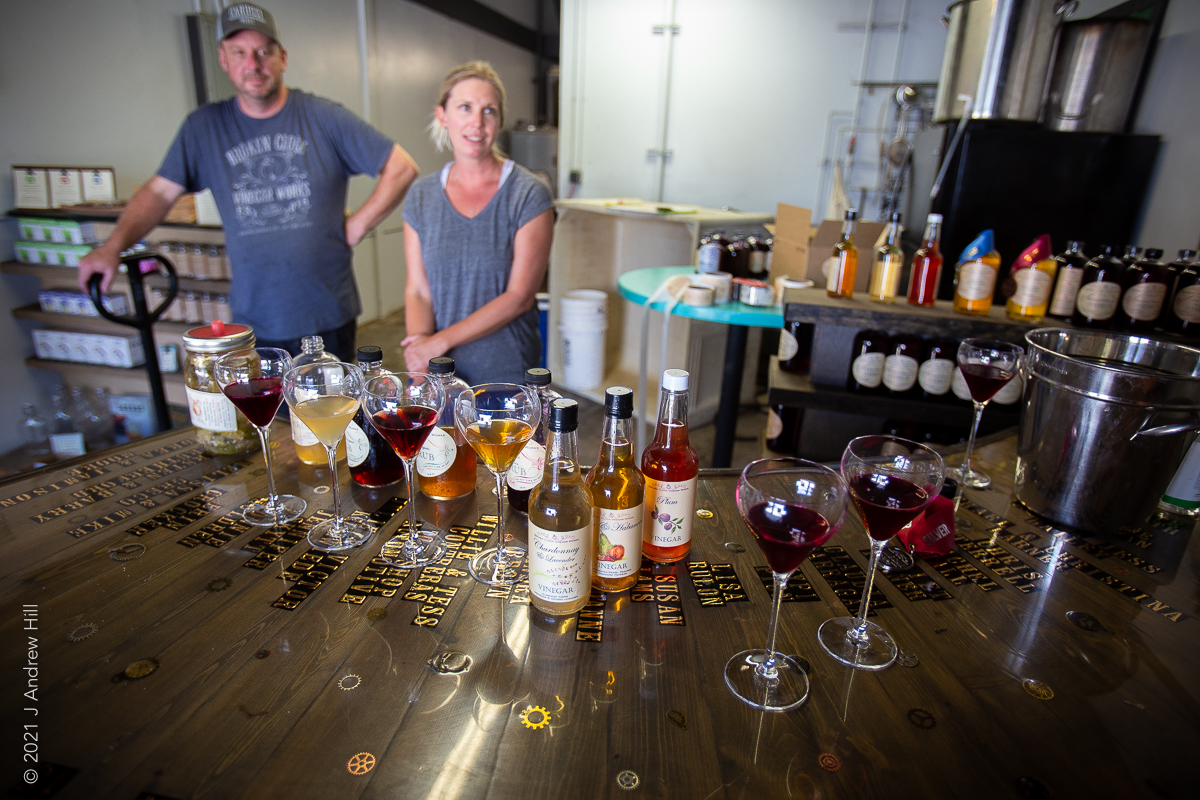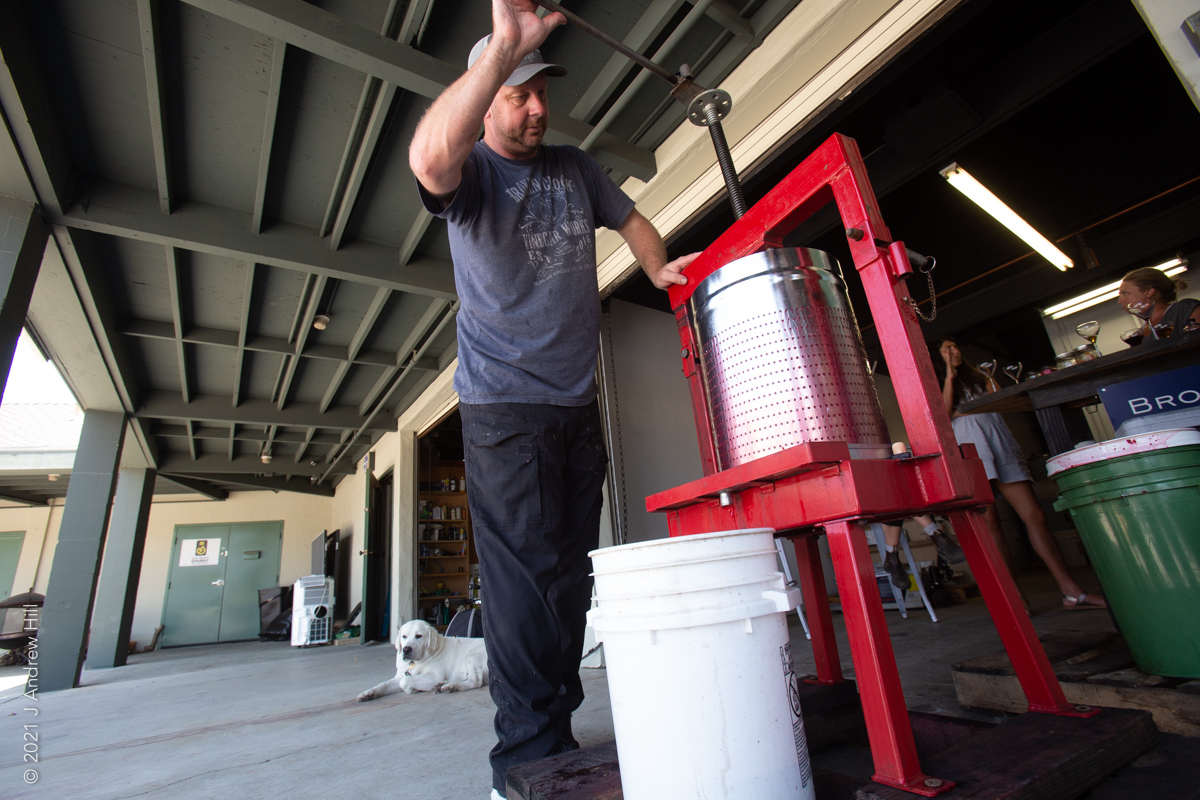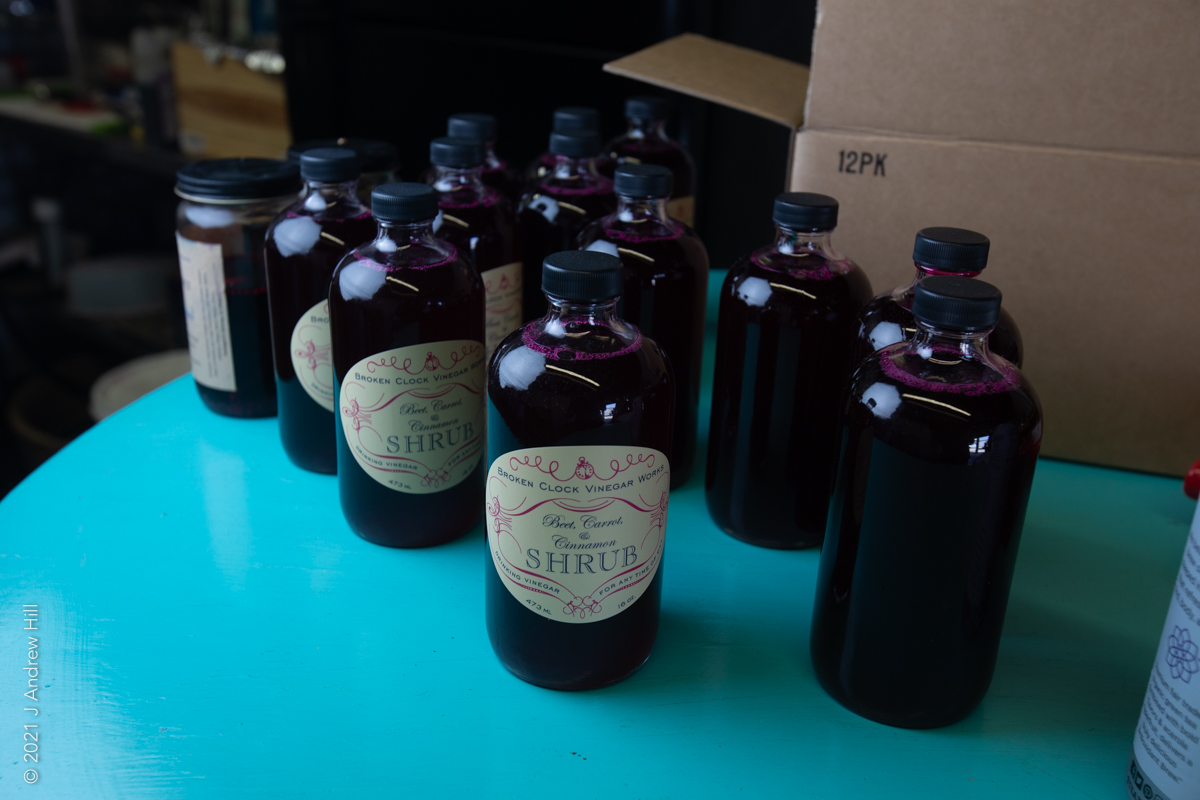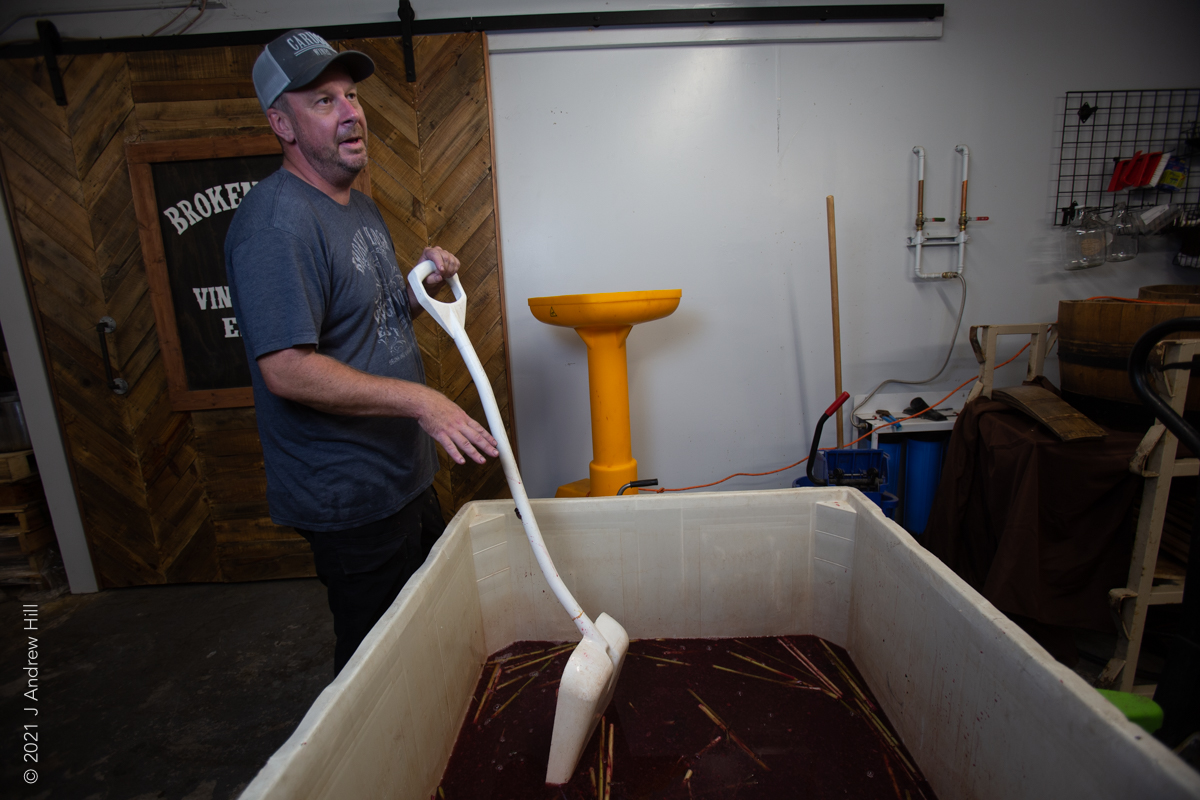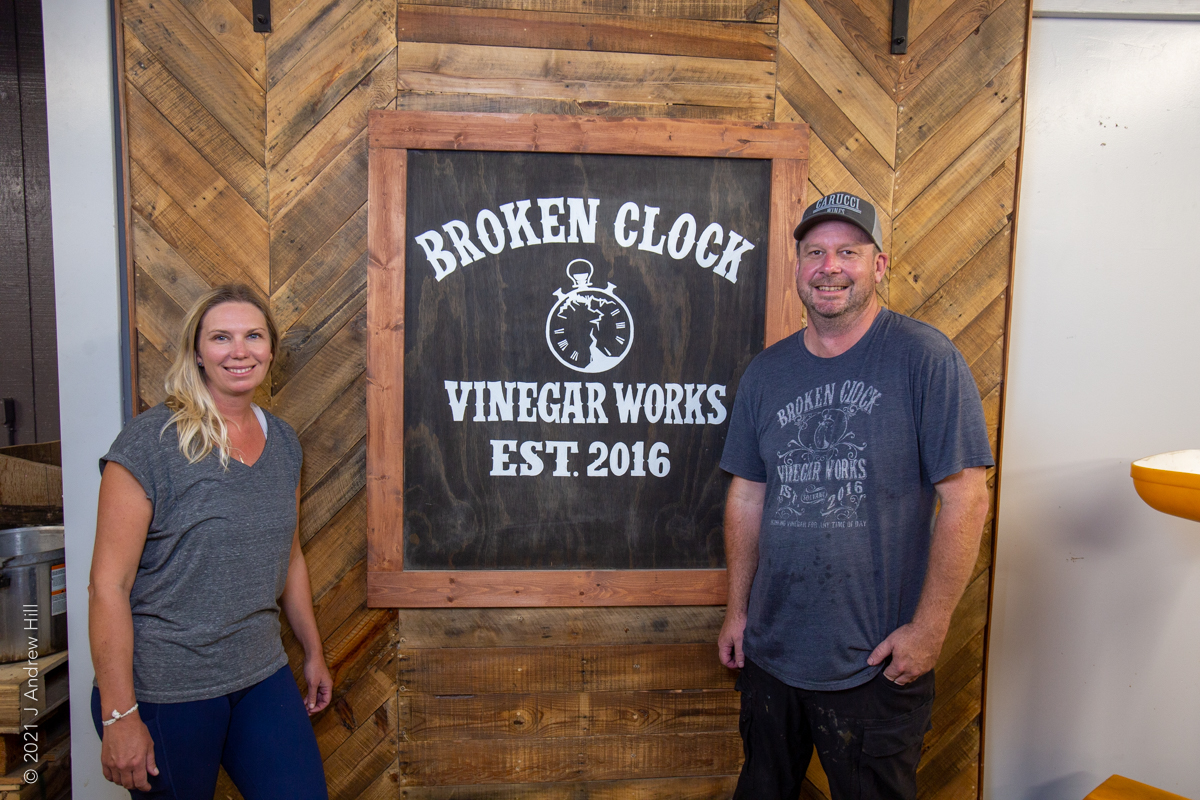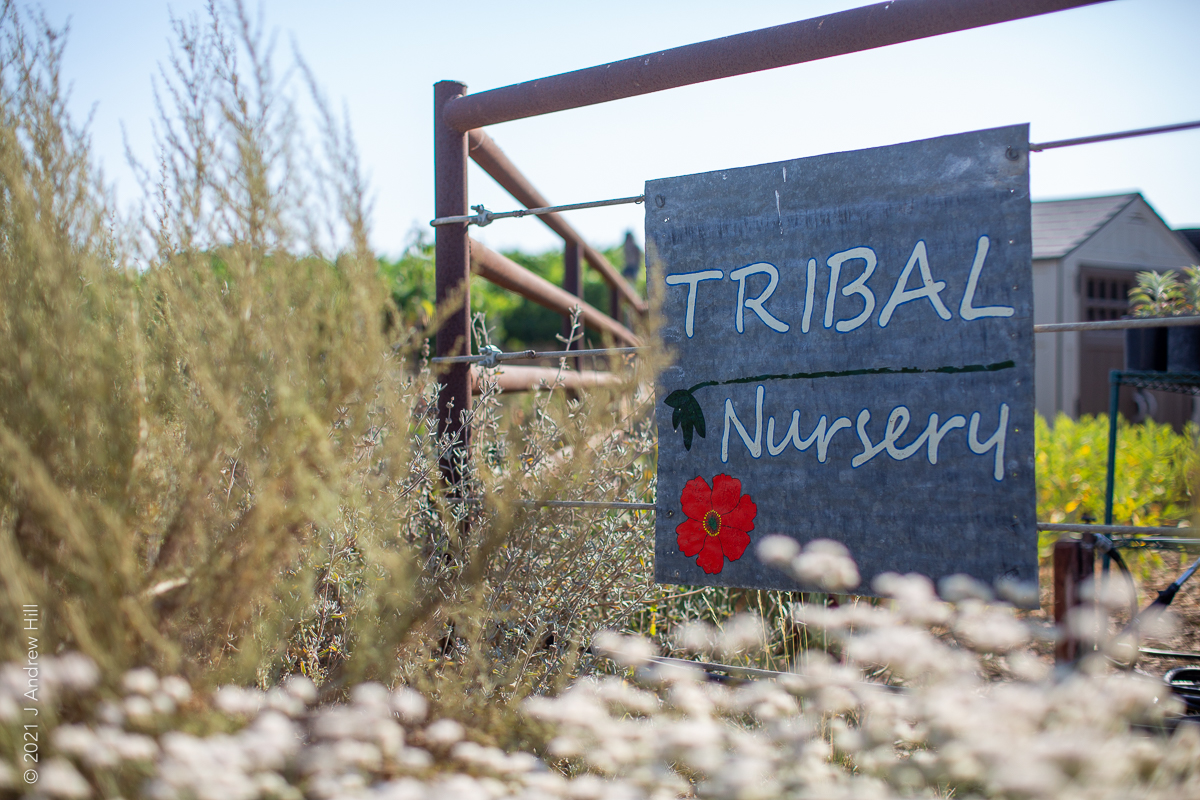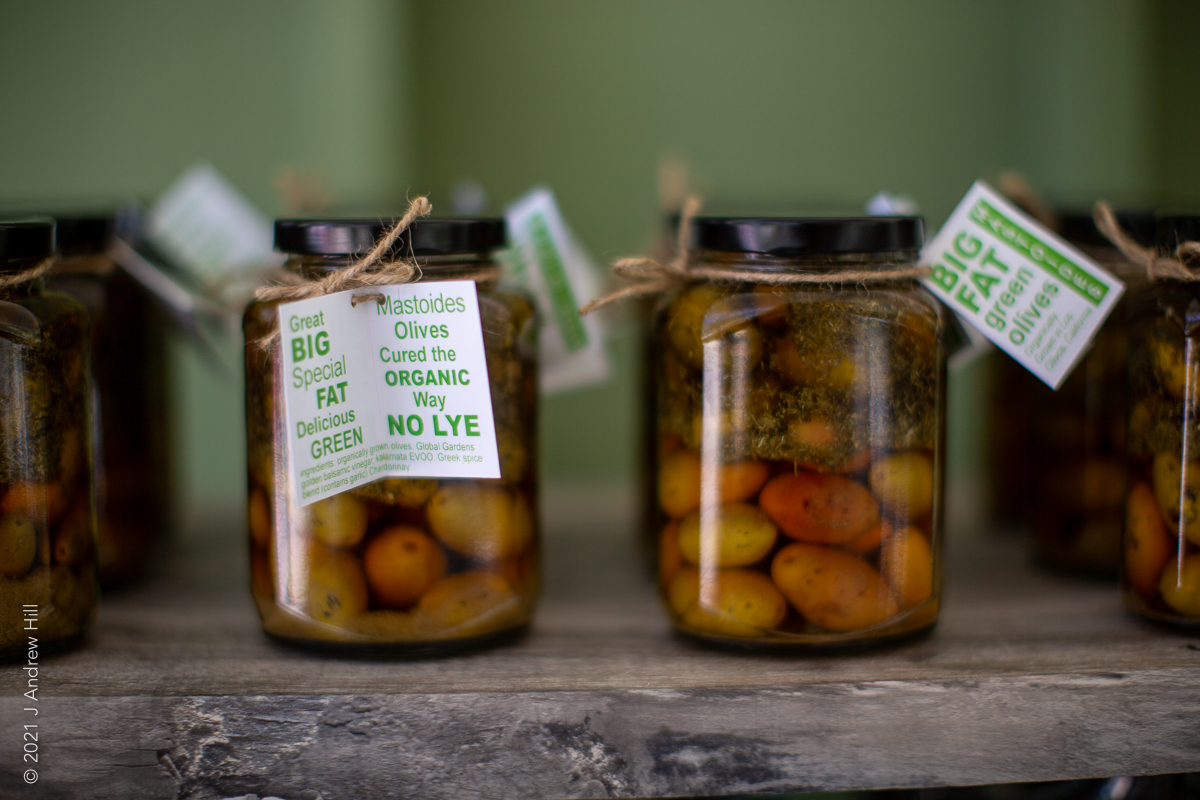Located in Solvang, Broken Clock Vinegar Works (BCVW) creates non-alcoholic shrubs and vinegarsVinegar: A sour-tasting liquid containing acetic acid, obtained by fermenting dilute alcoholic liquids, typically wine, cider, or beer, and used as a condiment or for pickling. with in-season fruits sourced from local farms (including Santa Barbara Blueberries and Clairmont Farms), excess produce gleanedFood Gleaning: Gleaning has been around for thousands of years. Today, it refers to collecting excess fresh foods from farms, gardens, farmers markets, grocers, restaurants, and even backyards to provide it to those in need. from neighbors, and their own backyard botanics. Their products’ simple mix of fruit, sugar, vinegar, and botanicals results in an intensely flavorful and concentrated libation that can be combined with sparkling water, added to a cocktail, or used in various culinary creations. Raw, unfiltered, and full of beneficial probiotics, BCVW’s unique flavor combinations include blackberry lemongrass, lemon lavender, and peach habanero.
How a shrub is made:
- First, the fruits undergo the process of fermentationFermentation: Fermentation is an ancient technique of preserving food. Fermentation is a natural process through which microorganisms like yeast and bacteria convert carbs — such as starch and sugar — into alcohol or acids. to become wine.
- Then, the wine is immediately transferred to a temperature controlled space designed to promote acetificationAcetification: The conversion of alcohol into acetic acid, a process used in the making of vinegar..
- The wine acetifies, which can take months.
- Once ready, water is added to the vinegar to reach 5% acidity.
- The shrub is ready to be enjoyed and/or bottled.
BCVW believes that the practice of fermenting and pickling foods is an art that has been usurped by convenience. In response, they have created easy to use DIY picklingPickling: The process of preserving or extending the shelf life of food by either anaerobic fermentation in brine or immersion in vinegar. This food preservation method gives the food a salty or sour taste. and lacto-fermentationLacto-Fermentation: Lacto-fermentation is a specific type of fermentation that uses lactic-acid-producing bacteria to preserve foods. kits so you can practice food preservationFood Preservation: Food by its nature begins to spoil the moment it is harvested. Food preservation is a means of saving food and making it last longer. This includes: freezing, drying, canning, pickling, jamming, fermenting, or smoking foods. at home. These packs take the guesswork out of producing your own brine based preserved food – and can be made with almost any local, in-season produce you have access to. While it may be easier to run to the store and grab a jar of pickles, it is much more rewarding and delicious to make them yourself.
Having had a large fruit and vegetable garden for 10 years, owners CT and Jody Williams believe the best way to keep it interesting is to find ways to enjoy its bounty throughout the year. “By growing and preserving your own food you know exactly what is going into your system, and by naturally preserving that food you’ll lead a healthier life,” says CT. BCVW is proud to have a closed loop systemClosed Loop Food System: As opposed to a linear food system that follows consumption of food from field to plate to waste, a closed loop food system is a more sustainable model that follows food from field to plate to field with little or no waste. that takes advantage of excess in-season produce, preserves it into an even healthier food, and eliminates waste.
Learn more about Broken Clock Vinegar Works and sign up for a Pickling and Fermentation Class to learn how you can preserve the harvest for year round enjoyment.

